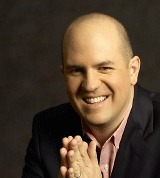Rogue IT drives cloud decisions: survey


I spoke with John Engates, Rackspace's chief technology officer, about what these findings mean:
Q: What were the biggest surprises to come out of the survey?
Engates: "We were surprised by the fact that 86% of the decisions saw lock-in as an important issue.... Another area was this idea that rogue IT was making the decisions within the company. If you think about where decisions are being made about cloud computing, it's outside the IT department. It's telling in terms of how cloud computing is being adopted, who’s looking into cloud computing to solve their problems, the willingness of companies to go around IT to get things done."
Q: Would you consider shadow IT to be a threat to IT departments?
Engates: "I think it could be perceived as a threat, but it also can be seen as an opportunity. If the IT department is forward thinking and looking ahead, they could be looking at it as a way to tap into the creativity of business units, rather than just telling them to wait. The reason these shadow IT guys are going around IT is because they have been told 'no' so many times, they say 'look, we’ve got to get stuff done, were going to go do it ourselves.' We see all these options out there, such as Software as a Service and Infrastructure as a Service."
"If IT embraces cloud computing, and puts it on the menu of services, puts it on the service catalog, then they're not going to be rogue or shadow, they can be doing it with full support of IT, and that’s what we are hearing from our forward-looking IT departments. That’s an opportunity for an enterprise to really change the dynamics of how IT gets done. It doesn’t have to be an either/or, it can be a both. It allows IT to focus on the things that do require either more complexity, or have very specific requirements that need customization or need a lot of hand holding."
Q: But you know eventually IT managers are going to get sucked into supporting whatever these users are doing.
Engates: "Well, it's absolutely true. They are getting sucked in. The easiest example is this trend, [bring your own device, BYOD], and that's where IT has a lot of headache, if they’re not looking ahead, to where their users want to be, embracing next-generation technology rather than trying to hold it back. The IT department is in this position of trying to make everyone happy. And this is going to be solved by embracing some of these next-generation tools and capabilities and blending their own internal capabilities with these external offerings. And presenting that back to the internal IT users."
Q: Is IT competing with outside providers? Are we seeing IT forced to compete and justify its pricing?
Engates: "What we're hearing a lot is IT departments want to become more and more like cloud service providers. They want to embrace the same ideas, the same concepts, the same pricing models and tools and engagement models that the cloud computing vendors are.
"RackSpace tired to model itself that mimicked the way IT did their business. What's happened with cloud computing is that has flipped, to the point where enterprises are trying to mimic cloud providers. They’re trying to become service providers to their internal constituents. They’re trying to become more agile, more nimble, they’re trying to have more software on demand. They’re starting to publish service catalogs to their own internal groups. They’re actually trying to use the same software tools, build a private cloud that looks and feels and behaves an agile next-generation cloud."
Q: Have you seen confidence in cloud increase over the years you have been at RackSpace?
Engates: "I think that's one of things it just takes time. Back in the early days of the internet. I used to run an internet service provider -- we also ran websites for people on the side, and we started to build e-commerce applications. People thought we were crazy -- for a long time, that was an uphill battle to get people to believe they were ever going to put their credit card on a website."
"It's the same with cloud computing. Some people have built their careers running their own data centers. They just don’t believe that cloud computing competes with them. Yes, it does. The only thing people have to get over is the idea of sharing resources, of pooled resources."
Q: Do you see cloud as an opportunity to advance IT profession, perhaps elevating to more of a consulting role with the business, to help identify technology resources inside or outside of the company?
Engates: "I think the role of the IT manager, the IT leadership of then organization is less responsible for building or designing technology from the ground up, they’re more in the business of assemblage technology, and they have been for quite a few years. Its very rare to meet a CIO who builds everything in-house. He's really pulling together capabilities from a lot of different sources. Sometimes, there’s software that's custom and developed by their own internal capabilities, but more often, there’s software and services that are sourced from third parties."
"And cloud computing represents a way to not just source the software, but source the whole stack.. so now IT is in the position of being the guide or the sheppard to help the internal users, the business units figure out what clouds to use, and how they should use them, and how they should integrate them with other applications within the enterprise, and which ones are high risk or low risk."